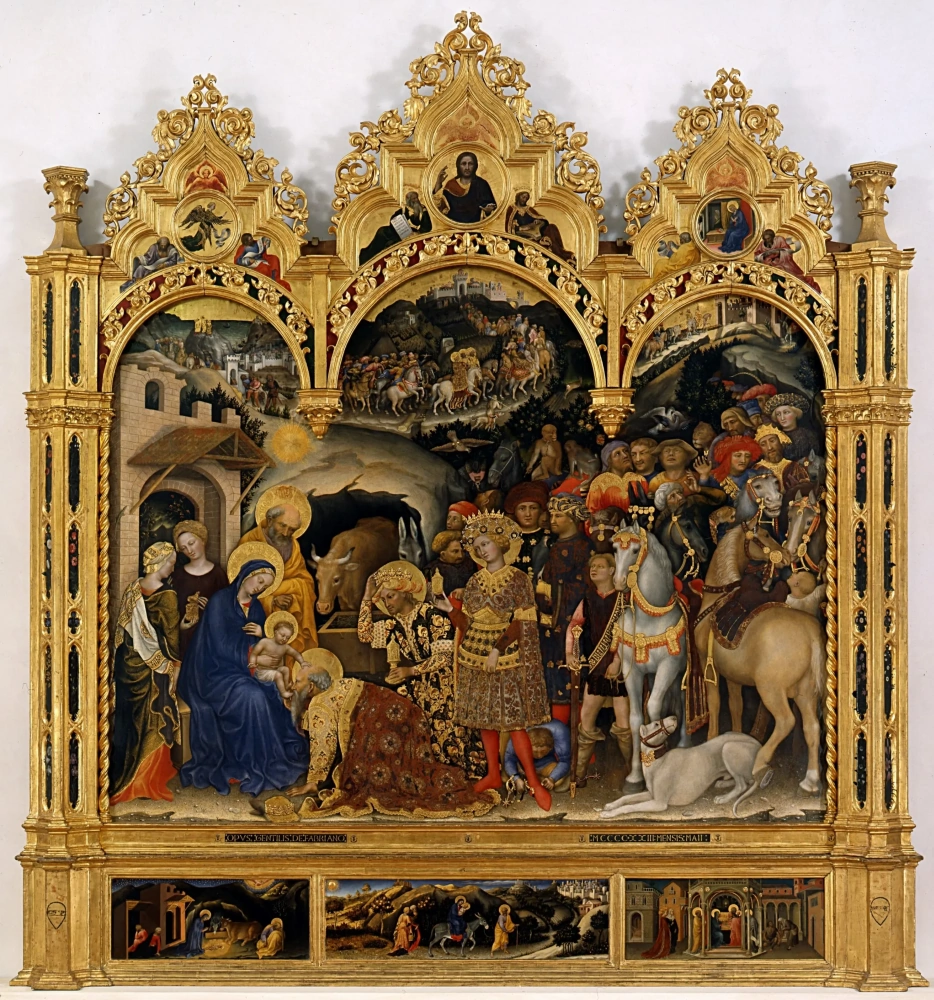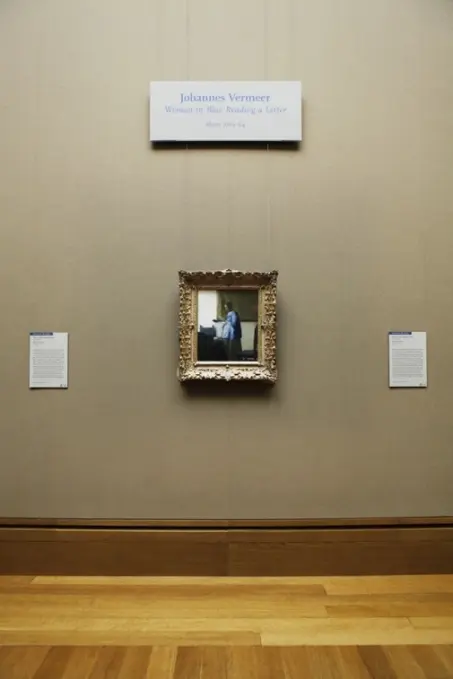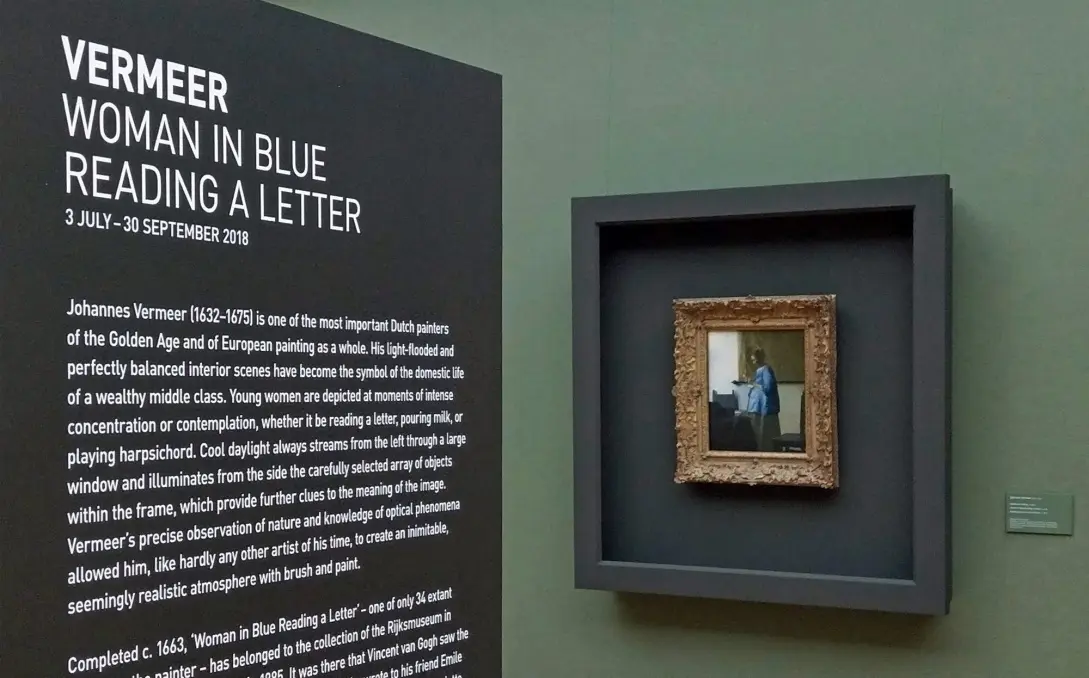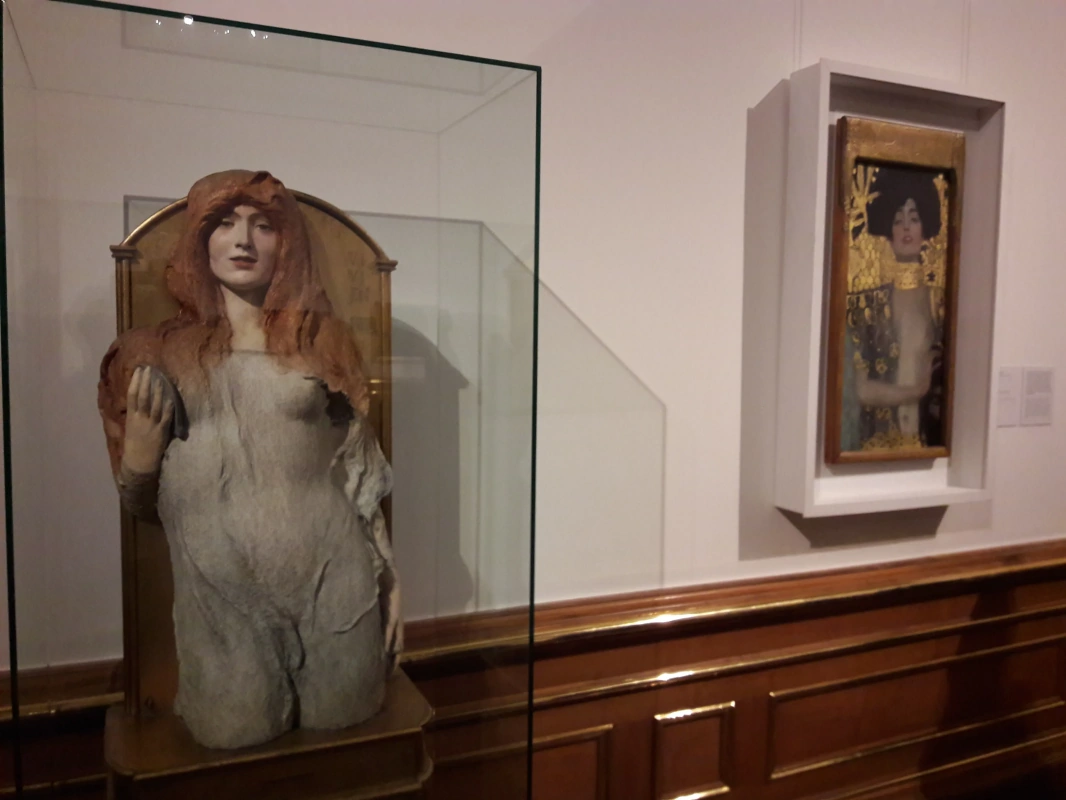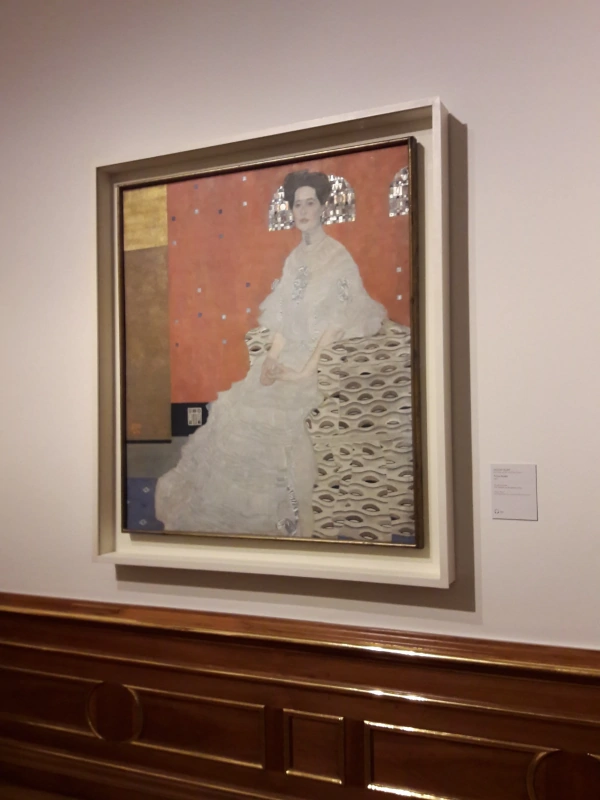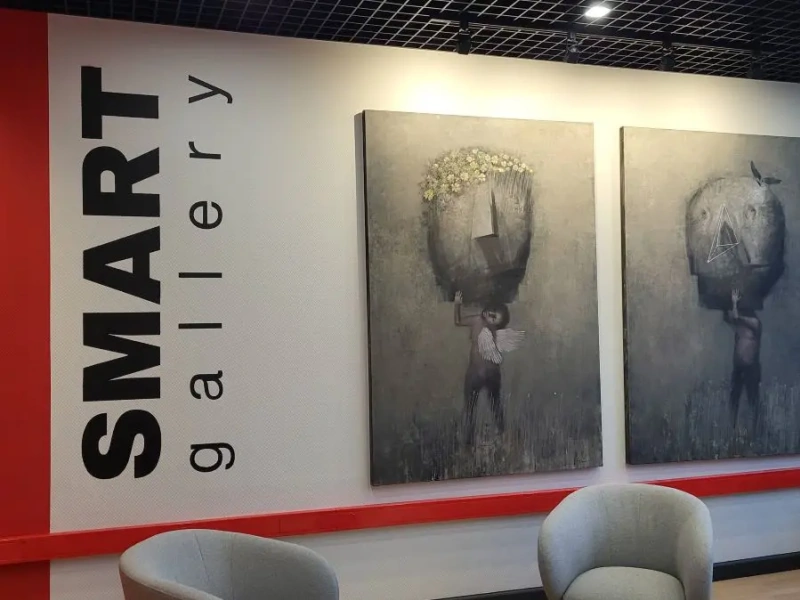"What's in a frame? That which we call a picture
In an improper frame will look less nice."
Or, perhaps, the picture’s message will be obscured by too ornate or too plain framing. Here, we present a retrospective journey into the history of framing and its evolution, with illustrations and an expert’s commentary.

Wood strips to frame icons were made as separate pieces and then glued or nailed to the painting support (which was a wood panel in most pictures and icons created before the 14th century).
It is believed that the artist Gentile da Fabriano was the first who made a frame not integral with the picture. His altarpiece panel Adoration of the Magi created in 1423 is framed with a carved architectural woodwork of a complex three-cusped shape. Some time later, the frame was embellished with jewels and semi-precious stones, and inlaid with pearls, nacre, and ivory.
In the mid-16th century, the sculptor Jacopo Sansovino, who was the chief architect in Venice, designed his own frame. It included large carved symmetric scrolls that alternated with human figures and animals. This frame type, after its designer, was named the Sansovino frame. In the Renaissance period, frame-making became an art of its own. Painters produced exquisite designs of carved fillets and often made frames themselves.

To suit commissioners' tastes, the style of frames was changing, they were becoming more and more sumptuous. Finally, another frame type, called "gallery frame," appeared. Its vertical sides were symmetrical, and its upper and lower strips differed in width and pattern. The decorative elements now included coloured coats of arms, cartouches, flags, and weapons.
The material for a fillet has always mattered. Poplar wood was used for simple profiles, and for elaborate small-patterned fretwork, lime wood was typically taken. Finished frames were gilded. Frames from expensive walnut wood were but partially gilded, or not gilded at all, to accentuate how exquisite the very structure of the material was. Its natural colour was considered so beautiful that frame-makers learned to imitate it in fillets from other woods. Ebony, mahogany, and rosewood frames were highly valued, too.

A frame does matter. Compare: gilding, oak, ebony.
Vermeer’s canvas Woman in Blue Reading a Letter, during its stay in the Rijksmuseum, has changed its frame more than once. After it was restored to be exhibited in Japan (where it was on display till 2012), the picture "tried on" a modern ebony-like frame. Perhaps, it was what Vermeer himself would prefer: in the interiors painted by him, the walls are decorated with pictures (in fact, the ones from his mother-in-law's collection) bordered with simple-looking frames, most likely made of ebony. However, the museum workers were dissatisfied with the result: the picture had lost some of its vividness of colour. So, they are still looking for an adequate alternative, a perfect 17th century ebony frame. Today, the canvas is bordered with a gilt frame from the Régence period (the 18th century).

High-class professionals in frame-making build up their experience for years, have a lot of extra knowledge and skills, and are experts both in art and in interior design.
A frame is not only a decorative setting, but also a load-bearing element for a picture to be hung on the wall. So, a good suspension and holding system is another characteristic of a properly made frame, and the maker is responsible for it, too.
Nowadays, pictures are often cased in glass, so a frame should be designed so that it can hold glass-fronted canvases. It must be strong enough to bear the total weight of the framed artwork supposed to hang on the wall for years to its owner’s delight.

The ten things to be considered when ordering a frame in a framing shop
Olga Panteleyeva, a consulting designer in the framing shop Bagetika, discloses some secrets of good framing.How to choose the right profile of the frame?
The choice depends on a number of factors: the size of the object to be framed, the painting technique, the style, and the owner’s preferences and taste. We never put a black and white photo in a wide Baroque frame, and never apply an aluminium profile to an oil-on-canvas painting. The right choice is always individual, with the general situation considered.
How does the width of a frame depend on the size of the picture?
There are no universal recommendations. A miniature can have a wide and massive frame, and a modern large-sized watercolour can look splendid bordered with thin splits. The main thing is a good sense of proportion and of the artwork’s stylistic features.
It is a groove on the fillet’s profile for a picture to be put in. When framing an art piece, it is important how deep the rebate is: it determines whether a picture fixed on a stretcher can fit in to fill it completely.
What determines the way of attaching a suspension system to the frame? What way is preferable?
A suspension system can be a line attached in one or two points to the picture (in plain words, a nail in the middle, or two at the edges. — Ed. note).
How to fix the line to the frame depends on the dimensions of the latter and on the owner’s wish: whether he or she prefers the picture to lie flat against the wall, or to be slightly tilted down towards the viewer. Tilted pictures are easier to look at when they are a little above eye level: then, the upper part of the picture is better seen. The tilt angle can be made bigger or smaller by changing the height the suspension lines are fixed at. The two-point suspension should be used to hang heavy and valuable pieces of art. Fixation in one central point of the frame is good for medium-sized, not too heavy pictures.
What determines the choice of the material for a frame?
It is determined by what is more important for the owner of the picture: the cost-effectiveness, or the colours of the room, or the functionality… If a priority is put on the cost, a good choice is a plastic (polystyrene) frame. If one likes modern minimalist designs, aluminium is the best. Wooden fillets are the basic alternative, they are the most diverse in designs and patterns, and can meet almost any wishes. Valuable pictures should be framed in wood using the materials of museum quality.

It is the result of using certain high-class materials and of the professional skills of the people in the studio where art objects are framed. Museum materials are those that help preserve art objects or extend their lifetime. The most common museum materials are acid-free paper (used in mounts) and museum glass. Besides, there are certain rules of how to fix a picture that help avoid damaging it and allow protecting it from environmental hazards (dust, insects, humidity).
What is museum glass, and when is it necessary?
It is glass impenetrable for ultraviolet rays and thus able to protect pictures and embroideries from sunlight and prevent their fading. This glass reflects practically no light, so it allows seeing purer colours. Besides, as it mirrors almost nothing, a viewer of the picture is not distracted by the reflections of other things. By contrast, traditional glass makes colours colder by half a tone and creates the shop window effect. Museum glass should be used when you are eager to save the artwork, whether because it is of a high historical value, or due to your personal wish. Besides, museum glass is useful in framing an object with unusual texture (like velvet), subtle colour gradations (in watercolours), or when the picture is too dark (in this case, ordinary glass will mirror the surrounding things and will not allow seeing the picture).
What is a mount, and why use it?
A mount has two purposes. The first is the practical one: a mount isolates the artwork from the glass, thus creating enough space to protect the work in case there is high humidity. Besides, a mount makes it possible to lay emphasis on certain characteristics of the picture.
The second purpose is aesthetic: the margins of a mount are the areas where the eye can rest from seeing the picture details, so as to perceive the picture better after returning to it later. Also, the use of a mount allows foregrounding certain characteristics of a picture. For example, colourful pauses make it possible to highlight a certain colour shade, and, by means of carving techniques, you can draw a viewer’s attention to the texture or to the embossing.

In framing studios, they offer three types of fixing a canvas on a stretcher: gallery stretching, studio stretching, and stretching for framing. The owner chooses the stretching type depending on how he or she intends to present the artwork. The gallery and studio types of stretching are recommended for pictures that do not need frames. With gallery stretching, the picture has no white areas at its sides. With studio stretching, there are white areas, and no metal brackets are seen. Ordinary stretching is performed by means of metal brackets attached at the sides of the picture. A painting so stretched is always put into a frame, which will hide the brackets.

Right: studio stretching
The price is determined by how complicated it has been to produce the frame. It can be made not only mechanically, but involve some handiwork, like brass plating. This can significantly add to the total cost of the frame. Besides, the price is influenced by the fact that noteworthy designer frames are chiefly manufactured in Europe (the main suppliers are Italy, Spain, and the Czech Republic). When choosing a frame, pay attention to the country of its origin, as the largest part of high-quality wooden frames come from these three countries. There are no big frame-making brands that are on everybody’s lips, so one should base his or her choice on the producing country, on frame-makers' expert recommendations, and on one’s own taste.







